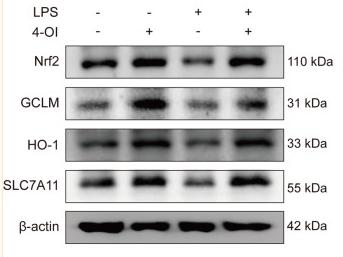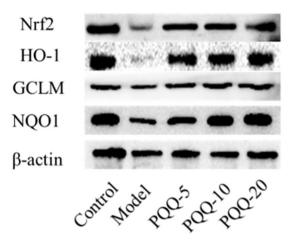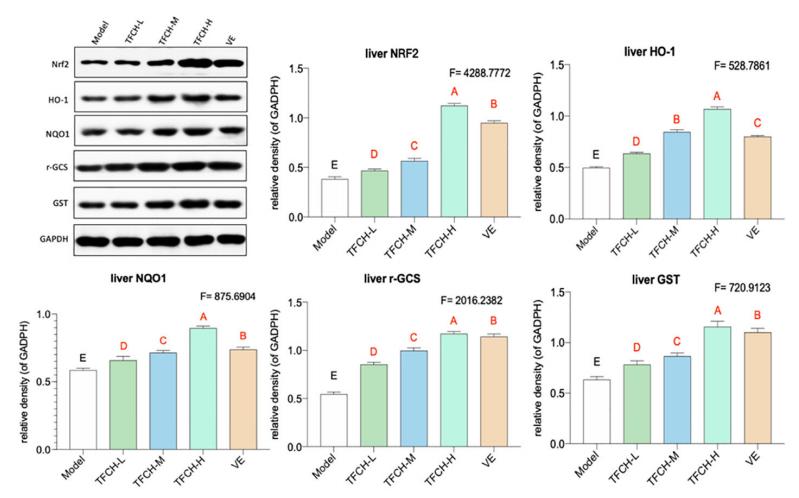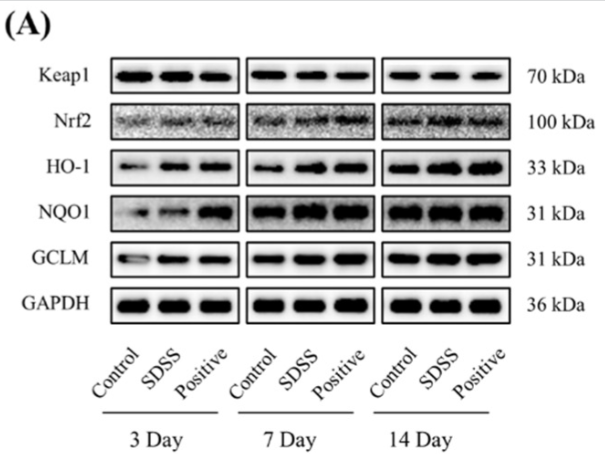GCLM Antibody - #DF7268
| Product: | GCLM Antibody |
| Catalog: | DF7268 |
| Description: | Rabbit polyclonal antibody to GCLM |
| Application: | WB IHC |
| Reactivity: | Human, Mouse, Rat, Pig |
| Prediction: | Pig, Bovine, Rabbit |
| Mol.Wt.: | 30kDa; 31kD(Calculated). |
| Uniprot: | P48507 |
| RRID: | AB_2839207 |
Related Downloads
Protocols
Product Info
*The optimal dilutions should be determined by the end user.
*Tips:
WB: For western blot detection of denatured protein samples. IHC: For immunohistochemical detection of paraffin sections (IHC-p) or frozen sections (IHC-f) of tissue samples. IF/ICC: For immunofluorescence detection of cell samples. ELISA(peptide): For ELISA detection of antigenic peptide.
Cite Format: Affinity Biosciences Cat# DF7268, RRID:AB_2839207.
Fold/Unfold
Gamma ECS regulatory subunit; Gamma-ECS regulatory subunit; Gamma-glutamylcysteine synthetase regulatory subunit; GCLM; GCS light chain; GLCLR; Glutamate cysteine ligase regulatory subunit; Glutamate--cysteine ligase modifier subunit; Glutamate--cysteine ligase regulatory subunit; GSC light chain; GSH0_HUMAN;
Immunogens
- P48507 GSH0_HUMAN:
- Protein BLAST With
- NCBI/
- ExPASy/
- Uniprot
MGTDSRAAKALLARARTLHLQTGNLLNWGRLRKKCPSTHSEELHDCIQKTLNEWSSQINPDLVREFPDVLECTVSHAVEKINPDEREEMKVSAKLFIVESNSSSSTRSAVDMACSVLGVAQLDSVIIASPPIEDGVNLSLEHLQPYWEELENLVQSKKIVAIGTSDLDKTQLEQLYQWAQVKPNSNQVNLASCCVMPPDLTAFAKQFDIQLLTHNDPKELLSEASFQEALQESIPDIQAHEWVPLWLLRYSVIVKSRGIIKSKGYILQAKRRGS
Predictions
Score>80(red) has high confidence and is suggested to be used for WB detection. *The prediction model is mainly based on the alignment of immunogen sequences, the results are for reference only, not as the basis of quality assurance.
High(score>80) Medium(80>score>50) Low(score<50) No confidence
PTMs - P48507 As Substrate
| Site | PTM Type | Enzyme | Source |
|---|---|---|---|
| K9 | Sumoylation | Uniprot | |
| K9 | Ubiquitination | Uniprot | |
| T17 | Phosphorylation | Uniprot | |
| K34 | Ubiquitination | Uniprot | |
| C35 | S-Nitrosylation | Uniprot | |
| K49 | Ubiquitination | Uniprot | |
| C72 | S-Nitrosylation | Uniprot | |
| K80 | Ubiquitination | Uniprot | |
| K90 | Ubiquitination | Uniprot | |
| K158 | Sumoylation | Uniprot | |
| K158 | Ubiquitination | Uniprot | |
| T164 | Phosphorylation | Uniprot | |
| S165 | Phosphorylation | Uniprot | |
| K169 | Ubiquitination | Uniprot | |
| K205 | Sumoylation | Uniprot | |
| K263 | Acetylation | Uniprot | |
| K263 | Ubiquitination | Uniprot | |
| Y265 | Phosphorylation | Uniprot | |
| K270 | Ubiquitination | Uniprot |
Research Backgrounds
In all tissues examined. Highest levels in skeletal muscle.
Heterodimer of a catalytic heavy chain and a regulatory light chain.
Belongs to the aldo/keto reductase family. Glutamate--cysteine ligase light chain subfamily.
Research Fields
· Cellular Processes > Cell growth and death > Ferroptosis. (View pathway)
· Metabolism > Amino acid metabolism > Cysteine and methionine metabolism.
· Metabolism > Metabolism of other amino acids > Glutathione metabolism.
· Metabolism > Global and overview maps > Metabolic pathways.
References
Application: WB Species: Mice Sample: lung tissues
Application: WB Species: Mice Sample: kidney tissues
Application: WB Species: mouse Sample: liver
Application: WB Species: Mouse Sample:
Restrictive clause
Affinity Biosciences tests all products strictly. Citations are provided as a resource for additional applications that have not been validated by Affinity Biosciences. Please choose the appropriate format for each application and consult Materials and Methods sections for additional details about the use of any product in these publications.
For Research Use Only.
Not for use in diagnostic or therapeutic procedures. Not for resale. Not for distribution without written consent. Affinity Biosciences will not be held responsible for patent infringement or other violations that may occur with the use of our products. Affinity Biosciences, Affinity Biosciences Logo and all other trademarks are the property of Affinity Biosciences LTD.




